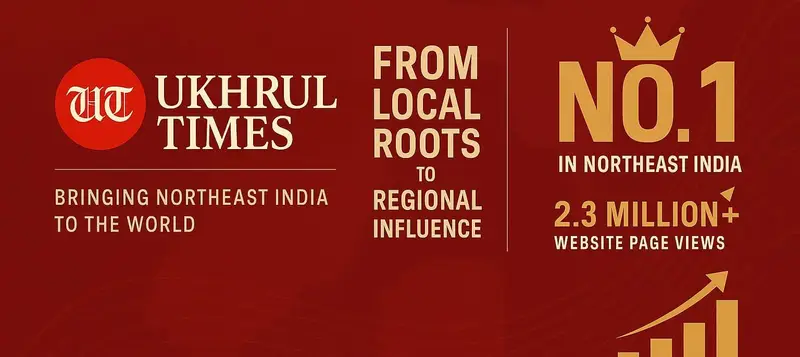Now Reading: The absence of refugee laws is fuelling ethnic tensions in Manipur
-
01
The absence of refugee laws is fuelling ethnic tensions in Manipur
The absence of refugee laws is fuelling ethnic tensions in Manipur

BY THE END of 2023, the ethnic violence in Manipur had taken a significant toll, leading to the loss of over 180 lives and the displacement of nearly 60,000 individuals. Against the backdrop of ongoing turmoil in Manipur, a significant deficiency in India’s refugee policy has been thrust into the spotlight, casting a cloud of uncertainty over the nation’s most fragile northeastern region. A key concern amid the ongoing ethnic conflict in Manipur revolves around the influx of displaced people from Myanmar who have crossed the border into India. Most of these displaced persons have left Myanmar due to the severe aftermath of the military coup in 2021. Armed clashes between the Myanmar military junta and various affiliated groups, including ethnic armed organizations and the People’s Defence Forces (PDFs), have displaced thousands of Myanmarese nationals. Among these displaced individuals, a significant portion belong to the Kuki-Chin-Zo ethnic group, and they have sought refuge in the Indian states of Manipur and Mizoram. This influx further complicates the challenges faced in Manipur and underscores the pressing need for comprehensive solutions to address this complex and distressing situation.
Check this | Kangpokpi, a Safe Haven for Immigrants and its Unsolicited Rampant Growth
Central to Manipur’s border predicament is the conspicuous dissonance between its predominantly porous borders and the modern construct of state boundaries. Less than 10% of Manipur’s 390 km international border with Myanmar is fenced, allowing significant cross-border migration. This permeability indicates the deep-seated ethnic affinities binding the Chin-Kuki-Zo populations on both sides of the border. These shared historical, cultural, and ethnic bonds prompt those living on the Indian side to extend a welcoming reception to refugees from Myanmar, given their shared heritage and unity that transcends the conventional boundaries of the modern nation-state.
However, this approach sharply contrasts with the legalistic perspective of state authorities, who categorize these border crossings as ‘illegal’ and stress the inviolability of established state boundaries. Simultaneously, within Manipur, the Meitei community grapples with distinctive concerns, viewing these refugees from Myanmar as ‘illegal immigrants’ and positing them as potential national security threats to the peace and stability of India’s northeast. This perception amplifies apprehension about demographic distortion within Manipur. Also, it induces anxiety due to the lack of assurance for an official repatriation policy upon political stability in Myanmar, further complicating the situation.
The heightened fear and apprehension prevailing in Manipur can be traced to the post-colonial context of refugee challenges in the broader eastern region of India. Migration and displacement have posed significant dilemmas in this area, echoing comparable struggles in the states of Tripura, Assam, and West Bengal. The historical narrative unfolds instances of population movements, often incited by factors such as ethnic conflicts, political unrest, and economic hardships. In Manipur’s case, the reverberation of these historical issues of human displacement has resulted in a complex and intertwined set of challenges for the indigenous population. The mirroring of circumstances in Tripura and Assam suggests that Manipur experiences similar patterns of demographic shifts, influxes of displaced individuals, and the resulting strain on resources and infrastructure. This parallelism exacerbates the pre-existing challenges tied to refugees in the region.
This issue became apparent in a recent incident in which Lieutenant Colonel Venkata Ravi Kiran J, a General Staff Officer with the Assam Rifles, raised concerns by formalizing a letter to the Deputy Commissioner of Manipur’s Chandel district. The contents of Colonel Kiran J’s missive disclose alarming revelations: a significant influx of 718 individuals, classified as illegal immigrants, successfully breached Indian borders on the 22nd and 23rd of July of 2023 alone.
Opinion | Will there be any far reaching impact in the implementation of NRC in Manipur
One of the most pressing challenges facing today is the glaring absence of legislation designed to address the issue of refugees seeking sanctuary within its borders. This legal vacuum has led to contentious conflicts within the region, driven by apprehension and mistrust. It is a striking irony that a nation that has endured the bitter experience of forced displacement during the 1947 Partition has yet to establish a clear international or domestic refugee policy. India notably refrains from being a signatory to the United Nations Refugee Convention of 1951 and its accompanying 1967 Protocol, which has exacerbated the ongoing turmoil in the region.
The recent ethnic unrest witnessed in Manipur is not an isolated incident but rather a part of the larger fallout from India’s ad hoc and selective refugee and migration policy. India’s response to the influx of refugees is marked by the absence of a formal and standardized refugee law, leading to a knee-jerk response influenced by a complex web of factors, such as geopolitics, diplomacy, domestic politics, and local socio-cultural dynamics. This approach often results in a binary perspective that oscillates between “welcoming refugees” and “unwelcoming refugees.” One striking example of this binary approach is evident in India’s treatment of Tibetan refugees who fled their homeland following the Chinese takeover of Tibet in 1959. Initially, India embraced Tibetan refugees, capitalizing on nationalistic sentiments fuelled by the 1962 border conflict with China. These moves garnered widespread public support for the Tibetan cause and served as a potent tool in the realm of vote-bank politics. However, over time, the treatment of Tibetan refugees has become increasingly complex, reflecting the changing political landscape and the shifting priorities of the Indian government.
In the face of the multifaceted challenges stemming from ethnic violence, demographic shifts, and border security concerns in Manipur, a comprehensive and forward-looking solution is imperative. The issues at hand demand a concerted effort to bridge the gaps in India’s refugee policy, address the pressing need for legislation, and foster understanding among communities affected by migration.
To mitigate the immediate fallout from the recent surge in unauthorized border crossings, collaborative measures are necessary. These may include diplomatic engagement with Myanmar to address the root causes of displacement, coupled with international cooperation to provide humanitarian aid to those affected. The absence of formal refugee laws in India is a glaring gap that needs urgent attention. A comprehensive refugee policy, tailored to the unique challenges of the northeastern region, should be formulated. This policy should prioritize the protection of displaced individuals while addressing the concerns of local communities and the Indian state. By employing strategic and deliberate policy formulation, engaging in diplomatic discourse, fostering community interaction, and promoting international collaboration, we can endeavour to achieve a future where peace, stability, and development can be ensured for all communities in Manipur.
R.K. Sanayaima is an Assistant Professor at School of Law, Manav Rachna University, Haryana. Views are personal.
This is not a Ukhrul Times publication. UT is not responsible for, nor does it necessarily endorse, its content. Any reports or views expressed are solely those of the author or publisher and do not necessarily reflect those of Ukhrul Times.
















